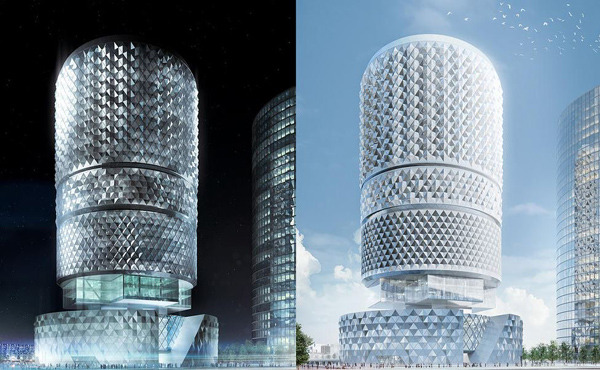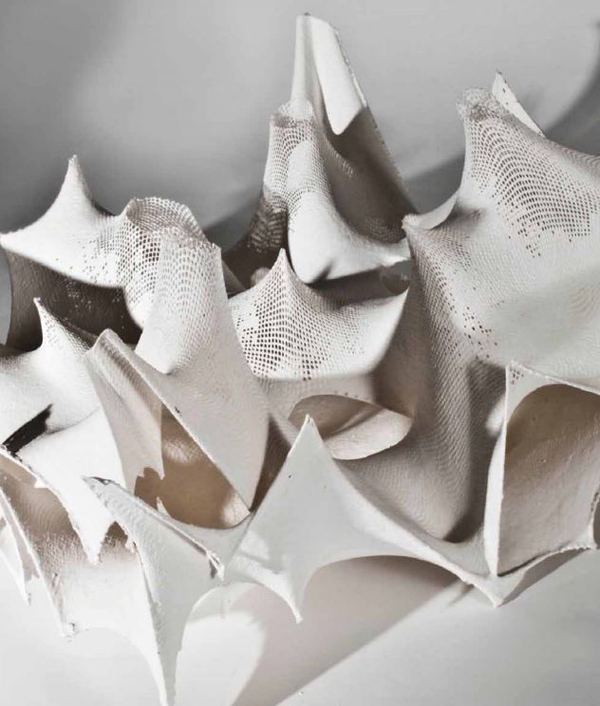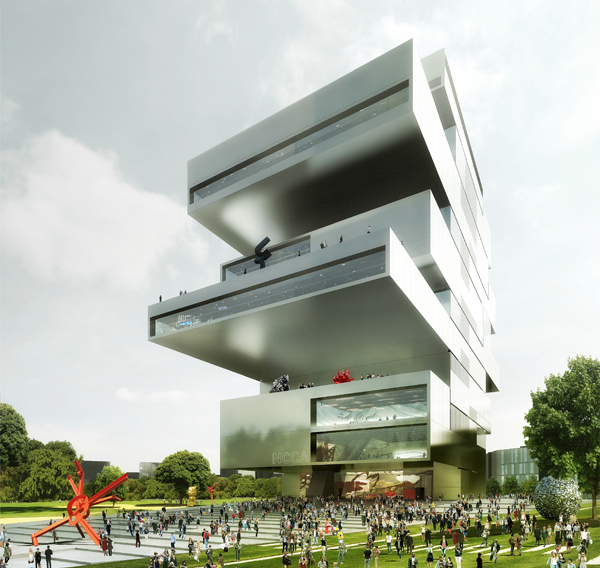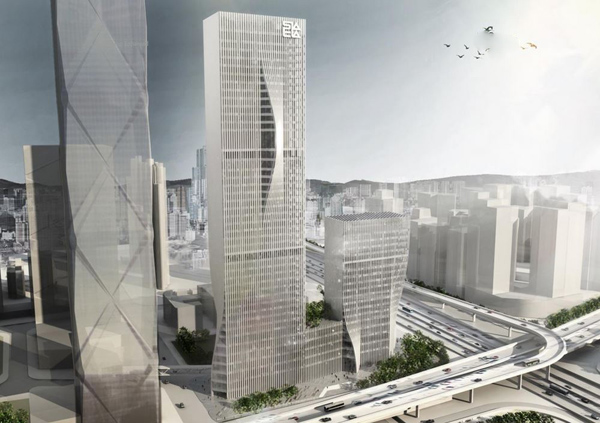Commercial Office Towers for Zhengzhou, China, is one of the most recent projects by Asymptote Architecture. These two towers aim to have a powerful presence and stature in the overall master plan as envisioned by Arata Isosaki and his planning team. The design for two new commercial office towers, for a new central business district Longhu in China, draw inspiration from a variety of historic Chinese architectural references and the rich tradition of ceramic art in the region. The main design features for both these towers consist of cylindrical towers placed within circular plinths that in turn provide each tower with large interior atriums and foyers. These large volumes spaces are highly accessible to the public and serve both as entryways as well as multi-use commercial space.
From these central spaces the main core elements in each tower extend upwards into a cruciform cantilevered office component. These suspended office spaces house new trading floors and other high volume programs high above and open void below while located at the base of the cylindrical towers above. Read the rest of this entry »






















